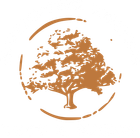Tree and Property Services in Chesapeake, VA and Surrounding Areas
Request Estimate
Transforming Landscapes, One Tree at a Time
At Hampton Roads Tree and Brush, we specialize in delivering exceptional tree and brush removal services to our cherished Hampton Roads community. With over 15 years of experience, our team of seasoned professionals is fully licensed and insured. As a woman-owned, veteran-owned, and family-owned business, we take immense pride in our work and are dedicated to providing top-tier services that prioritize both safety and customer satisfaction.
As the tree removal company Chesapeake, VA and the surrounding areas rely on, we're here 24/7 to help with hazardous trees, land clearing, and routine maintenance. Our commitment to thorough clean-up after each job ensures that your property remains pristine. We offer free estimates and are always ready to tackle emergencies, making us a reliable choice for all your tree and brush removal needs. Request an estimate now to begin!
Why Choose Hampton Roads Tree and Brush?
Choosing Hampton Roads Tree and Brush means opting for reliability, expertise, and a personal touch. We understand the unique needs of our community and are committed to providing services that are not only efficient but also environmentally responsible. Our status as a woman-owned and veteran-owned business underscores our dedication to diversity and excellence.
With 24/7 emergency services, free estimates, and a focus on thorough clean-up, we stand out as the tree removal company Virginia Beach, VA and the surrounding areas depend on for all their tree and brush removal needs. Call or text us today and let us help you maintain the beauty and safety of your property with our professional and compassionate approach.
Our Before and After Gallery
Our Services
Tree Removal, Preservation, and Maintenance
Our tree removal, preservation, and maintenance services are designed to handle everything from hazardous tree removal to routine care. We assess the health of your trees and provide expert recommendations to ensure they thrive.
Brush Removal and
Land Clearing
Brush removal and land clearing are essential for creating a clean and usable space on your property. Our team efficiently removes unwanted brushes and clears land to prepare it for new landscaping, construction, or other projects.
Trimming and Pruning
Proper trimming and pruning are vital for the health and appearance of your trees and shrubs. Our skilled arborists carefully trim and prune to promote growth, prevent disease, and enhance the overall aesthetics of your landscape.
Stump Grinding
Stump grinding is an effective way to remove the remnants of a tree from your property. Our advanced equipment grinds stumps down to below ground level, eliminating tripping hazards and making way for new landscaping.
Emergency Tree Services
When disaster strikes, our emergency tree services are available 24/7 to address urgent tree-related issues. Whether it’s storm damage, fallen trees, or other emergencies, our rapid response team is ready to restore safety and order to your property.
Commercial Tree Services
Our commercial tree services cater to the unique needs of businesses and large properties. We offer comprehensive solutions, including tree removal, trimming, and maintenance, to ensure that your commercial landscape remains safe and attractive.
Commercial Lawn Maintenance
Maintaining a pristine commercial lawn is crucial for creating a positive first impression. Our commercial lawn maintenance services include mowing, fertilization, and pest control, ensuring that your lawn stays lush and healthy.
Excavating, Grading, and Clearing
Our excavating, grading, and clearing services prepare your land for construction and development. We use state-of-the-art equipment to ensure precise and efficient work, whether you’re planning a new building, driveway, or landscape project.
A Gallery of
Our Work
Explore our gallery page and see remarkable before and after pictures showcasing our expertise in tree and brush removal. Witness the transformative results of our skilled team and discover how we can enhance and maintain your outdoor spaces with precision and care.
Fully Licensed and Insured for Your Peace of Mind
Call us at (757) 755-8089
Here's what our satisfied customers are saying...
At Hampton Roads Tree and Brush, we take pride in providing exceptional tree and brush removal services to our customers. We would be grateful if you could share your thoughts about our services with others. Your feedback helps us improve and helps others make informed decisions. Please take a moment to leave a review of Hampton Roads Tree and Brush and let others know what you think.














Share On: